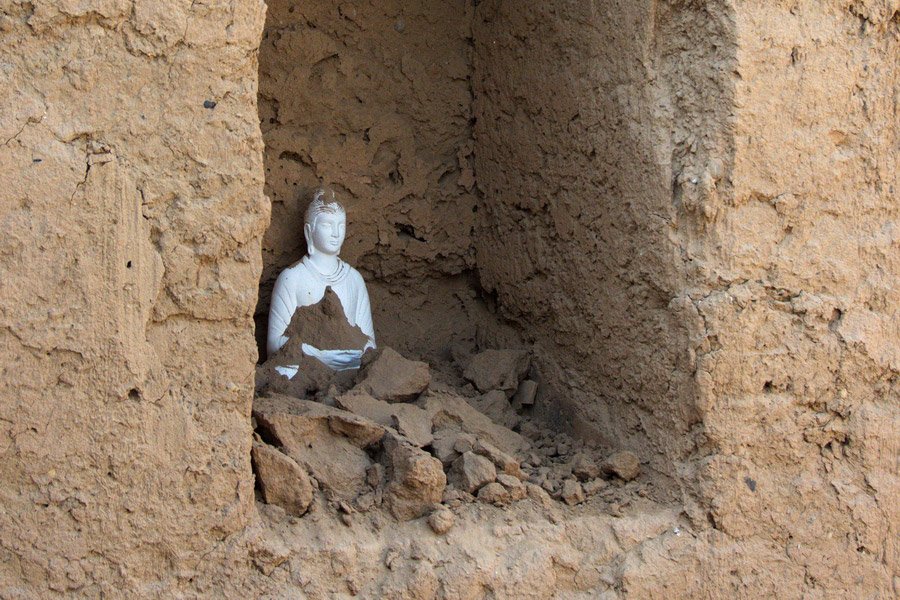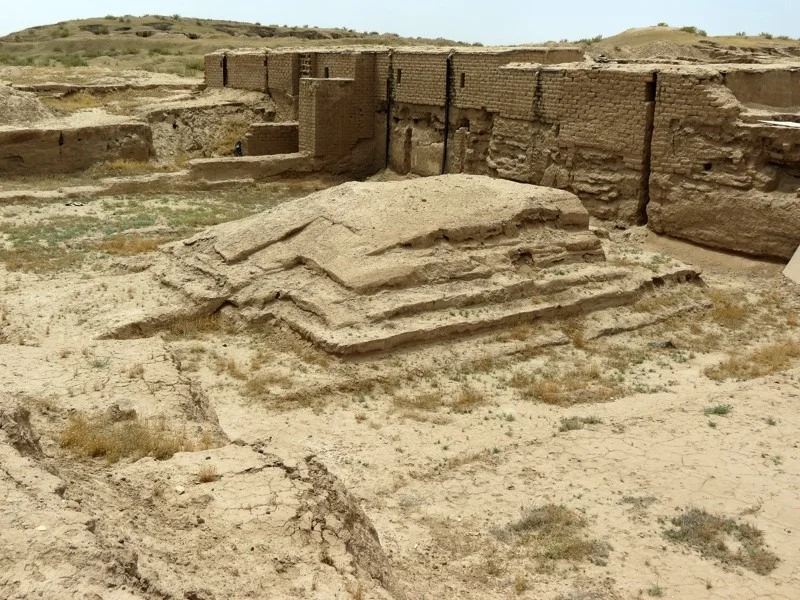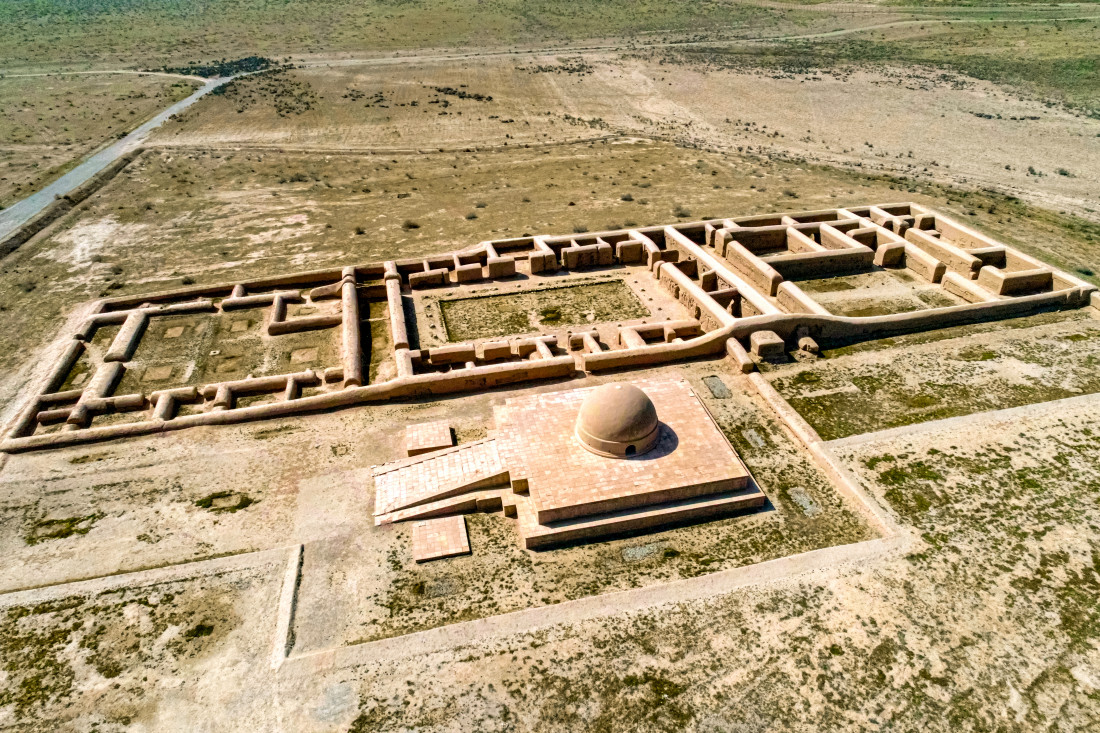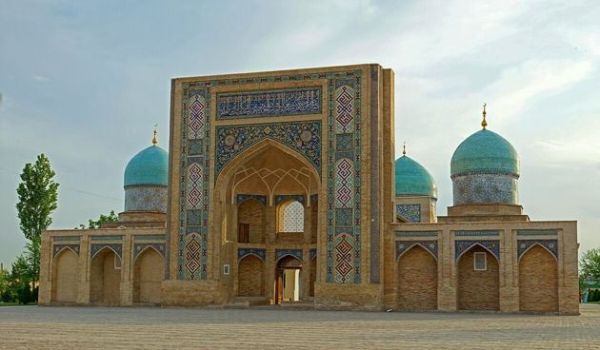Buddhist Cult Center of Karatepa and Fayaztepa
In the northwestern part of Old Termez, on the left bank of the Amu Darya, a three-domed hill rises. The locals called it Koratepa, the Black Hill. From its southern, highest peak, the citadel, surrounded by walls, and the ruins of the quarters of the ancient city are clearly visible. In 1936, the first archaeological excavations were carried out on Koratepa, as a result of which it became clear that under the centuries-old loess layers there was a temple complex with a cave monastery, which was founded by Buddhist monks at the end of the 1st century.
Monks' cells have been discovered on Koratepa, which were carved into the bowels of the hill on three tiers. The layout of the ancient buildings is clearly discernible in the excavations. Stone steps, which are at least two thousand years old, lead down to an earthen dome five meters in diameter. In the underground rooms, archaeologists found fragments of statues of Buddha and Bodhisattvas, figurines of dragons and a winged lion, wall paintings, among which one of the oldest paintings of Buddha surrounded by monks was found. There are also portraits of donors on the walls – notable customers of the construction of the temple. Ceramic lamps, boxes for relics, coins minted during the reign of Kanishka I and the reign of the Sassanian rulers have been preserved in the cells. The Koratepa complex included not only a monastery, but also a hostel, a vihara, where pilgrims found shelter. Graffiti drawings depicting a Buddhist stupa have been preserved on the wall of the vihara corridor.
Bactrian, Indian, Persian and later Arabic inscriptions are visible on the plastered walls, in niches for sculptures, and on ceramic vessels. Of particular value are the finds of Indian Buddhist inscriptions on ceramic vessels made in the handwriting of Brahmi and Kharoshtha. The monastery also had ground structures made of square mud bricks. The inner temple courtyards were paved with brick slabs and surrounded by wooden-columned iwans, of which only magnificent stone bases remained. The remains of two stupas, symbolic repositories of Buddhist relics, have been preserved in the temple complex.
The temple complex on Koratepa is one of the oldest preserved Buddhist cave monasteries. The Chinese monk Xuan Jiang, who made a pilgrimage to distant India at the beginning of the 7th century in search of sacred Buddhist books, writes in his famous "Notes on a trip to the Western Territories" about visiting shrines in Koratepa. In the last decade, the research of this ancient settlement has been conducted jointly by Uzbek and Japanese archaeologists.
Very close by, less than a kilometer north of Koratep, behind the ancient city wall, are the ruins of another Buddhist temple and monastery. In modern times, this archaeological site was named Fayaztep after R.Fayazov, an Uzbek scientist from Termez. The base of this monumental structure was a shrine decorated with paintings and sculptural images of the Buddha. It connected to an inner courtyard surrounded by columns supporting a wooden roof, traces of which remain to this day. The north-western part of the building was occupied by monks' cells with an altar in which a sacred fire burned. The southeastern wing of the building was given over to the household services with a refectory, in which the hearths for boilers, tandoor ovens for baking bread and a large number of fragments of ceramic dishes and vessels were preserved. The remains of a large stupa located near the temple are of the greatest interest. Inside it, a small earlier stupa was walled up, in which a dome with a reliquary and an opening for a symbolic "umbrella of honor", which once crowned the multi-tiered chaitya, was well preserved.
According to scientists, the Fayaztepa monastery was founded in the II century A.D. and existed until the beginning of the IV century, when simultaneously with Koratepa it was destroyed during the campaigns of the Sassanid Kushanshahs.














